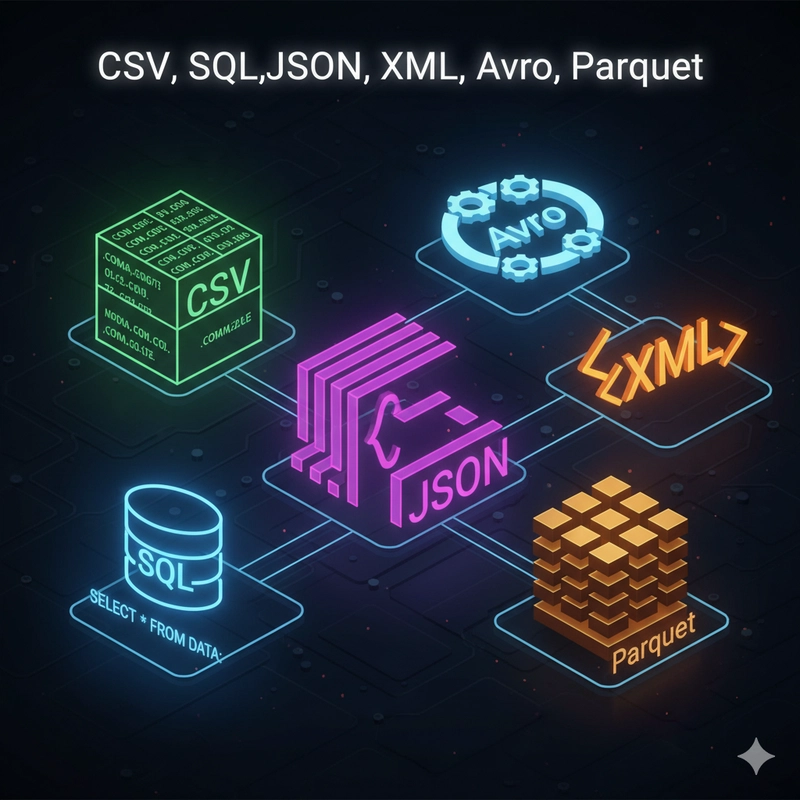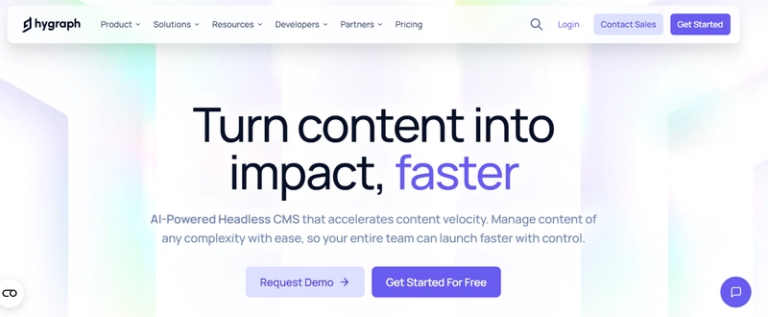Data Formats
Understanding Popular Data Formats: CSV, SQL, JSON, XML, Avro, and Parquet
When working with data engineering, analytics, or backend systems, you’ll often come across multiple data formats. Each has its own strengths, weaknesses, and use cases. Let’s explore the most common ones:
1. CSV (Comma-Separated Values)
- What it is: A plain text file where values are separated by commas.
- Use case: Simple tabular data, easy import/export.
- Pros: Human-readable, lightweight.
- Cons: No support for nested data, no schema enforcement.
2. SQL (Structured Query Language)
- What it is: A language to interact with relational databases. Data is stored in tables with defined schema.
- Use case: Storing structured data in relational databases (MySQL, PostgreSQL, etc.).
- Pros: Strong schema, powerful queries, ACID compliance.
- Cons: Not flexible for unstructured data.
3. JSON (JavaScript Object Notation)
- What it is: A lightweight data format for representing structured, nested data using key-value pairs.
- Use case: Web APIs, configurations, NoSQL databases.
- Pros: Human-readable, supports hierarchy.
- Cons: Can become verbose for large datasets.
4. XML (eXtensible Markup Language)
- What it is: A markup-based format using tags to represent data.
- Use case: Legacy systems, document storage, SOAP APIs.
- Pros: Supports metadata, validation with DTD/XSD.
- Cons: Verbose, harder to read compared to JSON.
5. Avro
- What it is: A row-based binary format developed by Apache, commonly used in data pipelines.
- Use case: Kafka messaging, big data serialization.
- Pros: Compact, schema evolution supported.
- Cons: Not human-readable (binary format).
6. Parquet
- What it is: A columnar storage format optimized for analytics.
- Use case: Big data processing (Spark, Hadoop, AWS Athena).
- Pros: Compressed, fast query performance, great for large-scale analytics.
- Cons: Not human-readable.
Quick Comparison
| Format | Type | Readable? | Best Use Case |
|---|---|---|---|
| CSV | Row-based | ✅ Yes | Simple tabular data |
| SQL | Relational | ✅ Yes | Databases with strong schema |
| JSON | Hierarchical | ✅ Yes | APIs, configs, NoSQL |
| XML | Hierarchical | ✅ Yes | Legacy systems, structured documents |
| Avro | Row-based binary | ❌ No | Messaging, streaming pipelines |
| Parquet | Columnar binary | ❌ No | Big data analytics, fast queries |
Final Thoughts
Each format shines in different scenarios:
- Use CSV for small tabular data.
- Use SQL for structured databases.
- Use JSON for modern APIs.
- Use XML when working with older systems.
- Use Avro for messaging pipelines.
- Use Parquet for analytics at scale.



